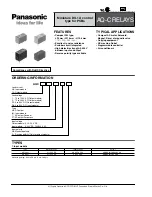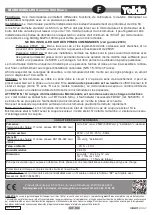
2–25
Application - 2
51V Inverse Time Overcurrent, with Voltage
Control or Voltage Restraint
Time overcurrent relays are basic to any protection
scheme. This is the main function used to trip circuits
selectively and to time coordinate them with other
up or downstream devices. For this function, eight
complete series of inverse time characteristics are
included. The eight curve families to be chosen
from are definite, inverse, very inverse, extremely
inverse, and four IEC curves. The pickup and time
dial settings are selected from the relay menu.
The curves available for use are shown in
Appendix D, Figures D-1 through D-8. They
cover a range from 1.5 to 20 times the tap. For
currents beyond 20 times the pickup setting, the
relay operating time will remain the same as the time
at 20 times the pickup setting. The 51V function has
voltage control or voltage restraint elements. Under
certain conditions, the Dispersed Generation (DG)
steady-state fault currents during a three-phase fault
can decrease to below the full load current. In order
to provide overcurrent protection for those conditions,
the voltage control/restraint element should be
enabled. The particular settings will be made by
information from short-circuit (fault) studies and
knowledge of the coordination requirements with other
devices in the system that respond to time
overcurrent.
When voltage restraint is selected, the tap setting of
the 51VR is modified continuously according to the
voltage inputs. The relay continues to operate
independently of current decrement in the machine.
The voltage restraint function is well-suited to small
generators with relatively short time constants.
Voltage restraint is disabled when shipped from
factory. When the generator is connected to the
system through a delta/wye transformer, proper
voltages (equivalent to the high-side of the
transformer) should be used for the 51VR or 51VC
element. The M-3520 can internally determine the
equivalent high-side voltages of the delta/wye unit
transformer, saving auxiliary instrument transformer
costs. The voltage-current pairs used are shown in
Table 2-2.
For voltage controlled operation, the function is not
active unless the voltage is below the voltage control
setpoint, which can be used to help confirm that the
overcurrent is due to a system fault. When applied,
most users will set voltage control in the range of
0.7 to 0.9 per unit rms voltage. Voltage control is
disabled when shipped from the factory.
The various features of the 51V function, such as
voltage control, voltage restraint, voltage
transformations (for delta-wye unit transformers)
are configurable.
■
NOTE
: This function should be blocked by fuse
loss if in the voltage control mode. Fuse
loss blocking is not desirable for the
restraint mode because the pickup is
automatically held at 100% Tap Setting
(see Figure 2-20) during fuse loss
conditions, and will continue to operate
correctly.
Generator Directly Connected
Generator Connected Through
Delta/Wye Transformer
Voltage
Voltage
L-N
L-L
L-L
L-N
Current
Current
I
A
I
A
I
B
I
C
I
B
I
C
(V
A
-V
C
)/
S
3
(V
B
-V
A
)/
S
3
(V
C
-V
B
)/
S
3
(V
AB
-V
CA
)/
S
3
(V
BC
-V
AB
)/
S
3
(V
CA
-V
BC
)/
S
3
V
AB
V
BC
V
CA
V
A
V
B
V
C
Table 2-2
Delta/Wye Transformer Voltage–Current Pairs
Summary of Contents for M-3520
Page 1: ...Instruction Book M 3520 Intertie Protection Relay ...
Page 83: ...2 50 M 3520 Instruction Book This Page Left Intentionally Blank ...
Page 95: ...M 3520 Instruction Book 3 12 This Page Intentionally Left Blank ...
Page 133: ...M 3520 Instruction Book 5 12 This Page Intentionally Left Blank ...
Page 195: ...A 20 M 3520 Instruction Book This Page Intentionally Left Blank ...
Page 213: ...D 12 M 3520 Instruction Book This Page Intentionally Left Blank ...














































